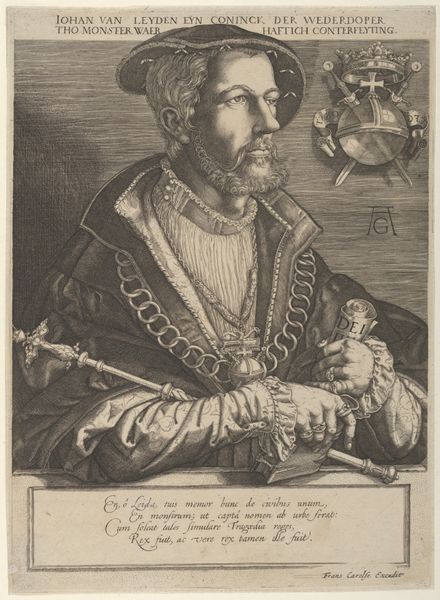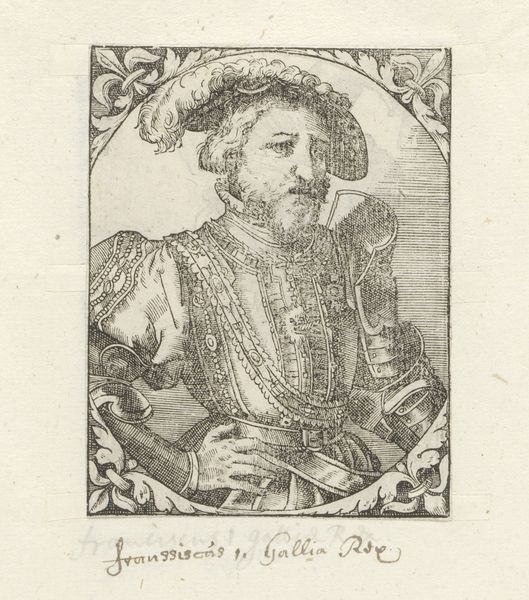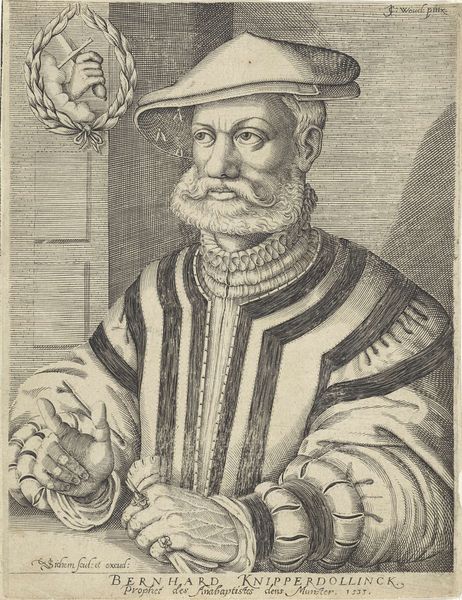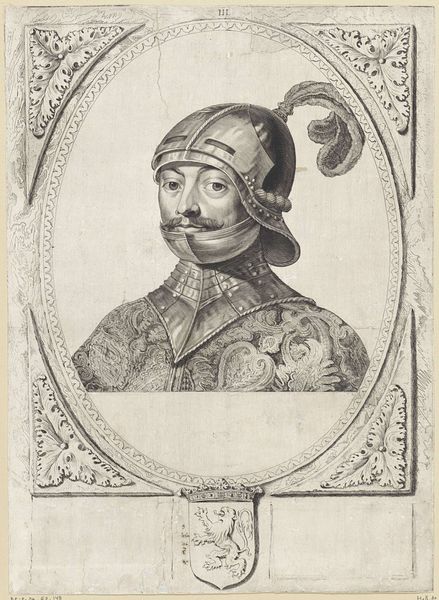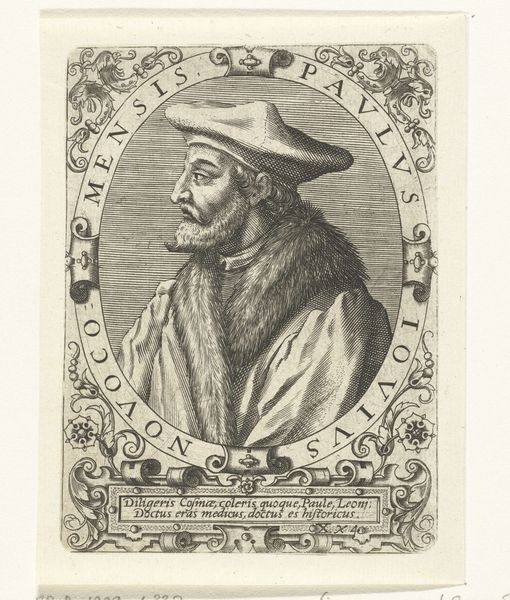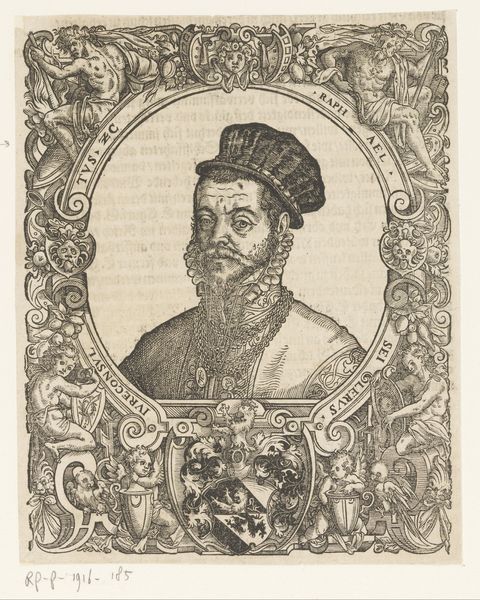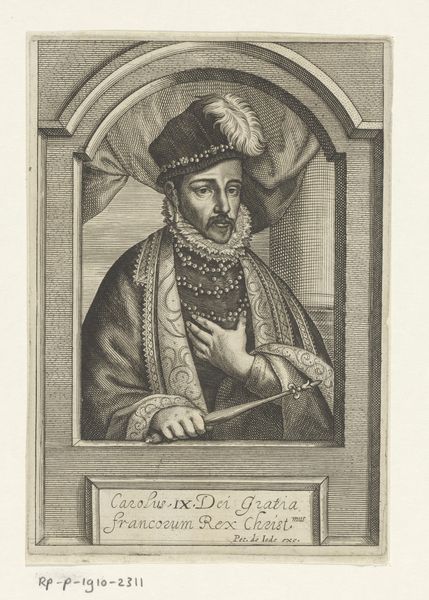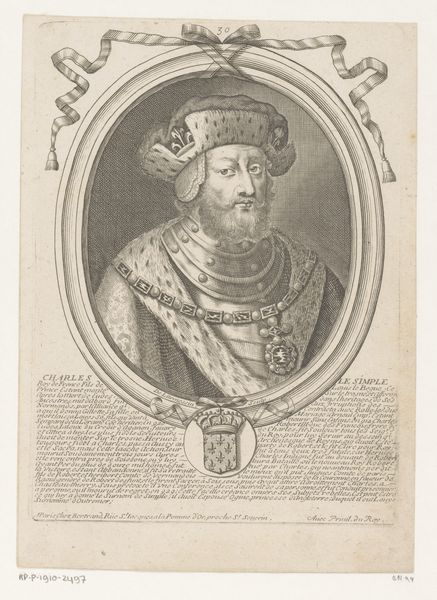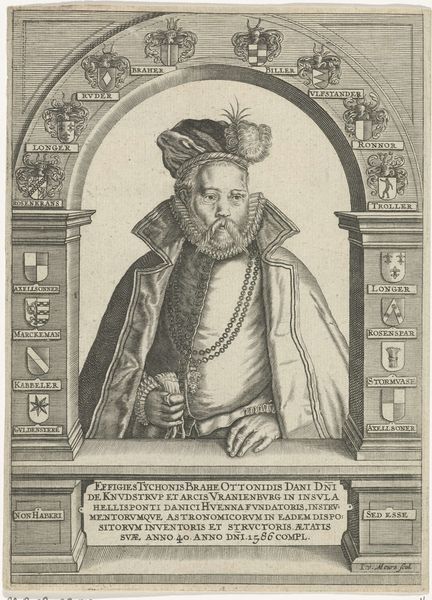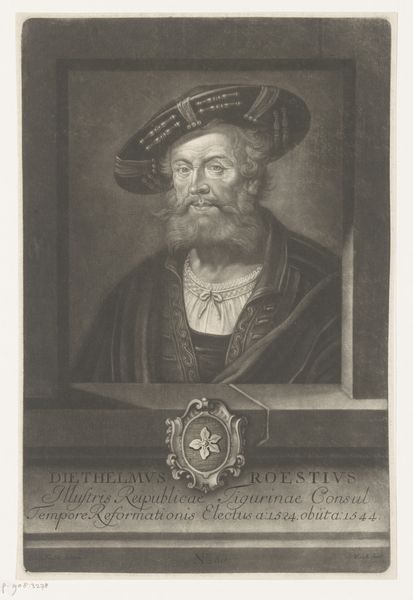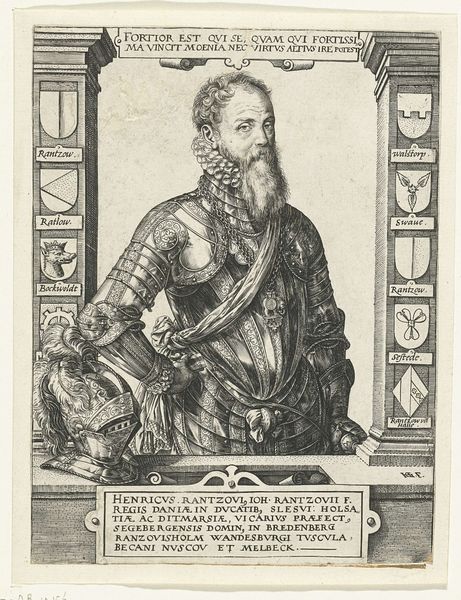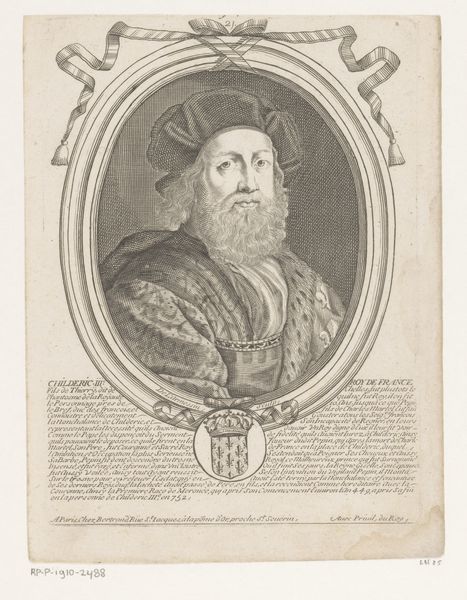
Portrait of Bernt Knipperdolling, a leader of the Münster Anabaptists 1615
0:00
0:00
drawing, print, engraving
#
portrait
#
drawing
# print
#
caricature
#
men
#
portrait drawing
#
history-painting
#
northern-renaissance
#
engraving
Dimensions: Sheet: 12 1/2 × 9 1/8 in. (31.7 × 23.2 cm)
Copyright: Public Domain
Editor: This engraving, "Portrait of Bernt Knipperdolling, a leader of the Münster Anabaptists" made by Jan Muller in 1615. It's a strikingly detailed print. He looks so stern. What kind of message was Jan Muller trying to send with this piece? Curator: A vital one about power, resistance, and religious conflict. Knipperdolling was a key figure in the Münster Rebellion, an Anabaptist uprising that radically challenged existing social and political norms. Muller’s portrait, created posthumously, exists within a larger discourse about the Reformation and its discontents. Note the Latin inscription. What does that communicate about intended audience and its message? Editor: It would reach educated elites? Something about the carnificem… meaning butcher? Curator: Exactly! It suggests that Knipperdolling, despite his position, ultimately met a violent end. What are your thoughts about the arm holding a sword surrounded by a wreath? How do you perceive that emblem relating to the ideas and power dynamics in the portrait? Editor: I see it as a symbol of forceful control, perhaps a critical commentary on Knipperdolling’s own methods, or a visual warning to others considering similar radical actions. Curator: Precisely. Consider, though, that within Anabaptist communities, symbols of resistance and martyrdom could carry positive meanings too. Do you see how the act of engraving itself -- as a reproducible medium -- could amplify these complex, competing narratives? Editor: Yes, engravings allowed for wide dissemination, fueling the circulation of different interpretations of Knipperdolling and his legacy. Curator: Exactly! The artwork shows how visual representations can become battlegrounds in conflicts. Editor: So much to think about when we examine the intersection of art and history. I would not have guessed that this was so political on first view! Curator: Understanding art’s historical and social context brings it to life. There is much to uncover from visual representation that relates to gender, identity, politics and race!
Comments
No comments
Be the first to comment and join the conversation on the ultimate creative platform.
